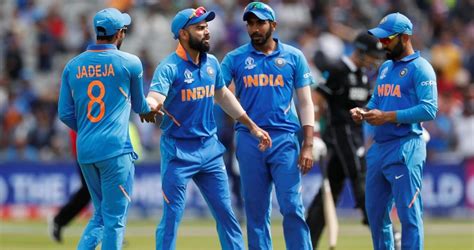Explore cricket’s historical roots in Indian culture, its role in national identity, social dynamics, economic influence, and future cultural relevance.Cricket is more than just a sport in India; it is a vibrant tapestry woven into the very fabric of the nation’s culture and identity. This article delves deeply into the multifaceted significance of cricket in India, exploring its historical roots that trace back to the colonial era and its evolution into a symbol of national pride and unity. We will assess how cricket transcends boundaries, forging community bonds and influencing social dynamics across diverse demographics. Additionally, we’ll analyze the economic impact of this beloved sport, shedding light on its role in driving growth and opportunities. As we look to the future, we’ll examine the evolving cultural relevance of cricket in an ever-changing society. Join us on this journey to uncover how this game of bat and ball resonates so profoundly in the hearts and minds of millions.
Examining The Historical Roots Of Cricket In Indian Culture
The history of cricket in India is rich and complex, reflecting the country’s diverse cultural tapestry. Originating during the British colonial era, cricket was introduced to India by British sailors in the 18th century. The first recorded match took place in 1721, and it was played in the port city of Surat. Over the following decades, cricket gradually gained popularity among the Indian populace, largely influenced by British expatriates and local elites who adopted the sport.
By the 19th century, examining the evolution of cricket revealed its growing stature, as Indian players began to participate in matches alongside British teams. The formation of various cricket clubs, such as the Bombay Gymkhana and the Calcutta Cricket Club, played a significant role in promoting the game across the subcontinent. This period marked a transformation as cricket transitioned from a colonial pastime to a sport embraced by Indians of all backgrounds.
The establishment of the first Indian cricket team, which toured England in 1911, symbolizes a crucial milestone in this journey. It not only showcased the talent of Indian cricketers but also helped foster a sense of national pride. As Indian players began to excel on international stages, cricket became a platform for expressing nationalist sentiments, especially in the pre-independence era. The sport served as a unifying force, transcending the divides of caste, class, and religion.
Moreover, cricket’s integration into regional and local cultures has contributed significantly to its popularity. Various states developed their own forms of the game, often blending traditional local sports with cricket, which underscores the adaptability of this global sport within Indian culture. Today, cricket is more than just a game; it represents a rich heritage that continues to evolve.
examining the historical roots of cricket in Indian culture signifies the sport’s journey from a colonial introduction to a symbol of national identity and unity. As cricket continues to flourish, its cultural significance remains an integral part of India’s social fabric, reflecting both its past and its aspirations for the future.
The Role Of Cricket In Shaping National Identity And Unity
Cricket in India transcends the boundaries of mere sport; it embodies a critical aspect of national identity and serves as a unifying factor in a country marked by diverse cultures, languages, and religions. Examining The integral role of cricket in this context reveals how the game fosters a sense of belonging among millions of Indians.
When the Indian national team takes the field, it represents not just a squad of players but the entire nation, igniting a fervor that unites people across the socio-economic spectrum. Major tournaments, especially the ICC Cricket World Cup and the Indian Premier League (IPL), see even the most marginalized communities rallying together in support of their team, demonstrating the sport’s capacity to forge solidarity and shared identity.
Cricket matches, particularly high-stakes games against traditional rivals like Pakistan, become epic narratives that encapsulate historical context, political dynamics, and cultural sentiments. This rivalry provokes nationalistic pride, with fans expressing their loyalty and support in ways that extend beyond the stadium. Such instances showcase how deeply intertwined cricket is with Indian nationalism.
Moreover, cricketing legends such as Sachin Tendulkar and M.S. Dhoni have come to symbolize hope, perseverance, and the quintessential Indian spirit. Their journeys often mirror that of the common man, creating relatable figures who inspire future generations, thus propelling the sport’s cultural significance further.
In essence, as cricket continues to dominate the hearts and minds of millions, it reinforces a collective identity that is rooted in shared experiences, victories, and even defeats. It stands as a testament to how a sport can play a pivotal role in weaving the very fabric of a nation, amplifying the call for unity and understanding amidst diversity.
How Cricket Influences Social Dynamics And Community Bonds
Cricket in India is much more than just a sport; it holds a profound influence on social dynamics and community relationships across the nation. The game fosters a sense of belonging and unity among diverse populations, transcending regional, linguistic, and cultural barriers. By examining the various ways cricket shapes interpersonal connections, we can appreciate its role in enhancing community bonds.
Examining The impact of cricket on societal interactions, one can observe that local matches often serve as a community gathering point. These matches create opportunities for people from different walks of life to come together, engage in friendly competition, and celebrate shared experiences. In many areas, cricket matches are organized during festivals or communal events, reinforcing social ties and collective identity.
Moreover, cricket has the unique ability to bridge generational gaps. Older and younger generations often connect over their favorite players, past matches, and memorable cricketing moments. This intergenerational interaction fosters mentorship and strengthens family and community units.
| Social Dynamics | Community Bonds |
|---|---|
| Fosters inclusiveness and participation | Encourages teamwork and collaboration |
| Builds friendships across cultural divides | Provides common ground for discussions and debates |
| Promotes gender inclusivity in various formats | Engages youth in constructive activities |
Furthermore, cricket serves as a platform for social activism. Numerous players use their visibility to draw attention to crucial societal issues, encouraging fans to participate in significant discussions and advocacy efforts. This sense of responsibility helps to mobilize communities and instill a spirit of social responsibility among fans.
The examination of how cricket influences social dynamics and community bonds presents a compelling picture of this beloved sport as a unifying force in India. From fostering connections across different groups to inspiring social change, cricket remains a pivotal element in shaping the social landscape of the country.
Examining The Economic Impact Of Cricket In India
The economic impact of cricket in India is profound and multifaceted, making it a significant contributor to the nation’s economy. From grassroots initiatives to international tournaments like the Indian Premier League (IPL), the sport generates revenue and employment opportunities that ripple across multiple sectors.
- Sponsorship and Advertising: Cricket attracts substantial sponsorship deals and advertising revenues. Companies invest heavily in advertising during matches, and sponsorships with teams provide brands with unparalleled visibility.
- Employment Generation: The cricket ecosystem creates jobs not only for players but also for support staff, coaches, administrators, and even those involved in stadium management and event execution.
- Infrastructure Development: Investments in cricket infrastructure, such as stadiums and training facilities, bolster local economies. These developments often lead to job creation and stimulate tourism.
- Player Endorsements: Successful cricketers command significant endorsement deals, contributing both to their personal wealth and the broader economic framework, as they often invest back into their communities.
- Tourism: Major cricket events attract international tourists, boosting local businesses, from hotels to restaurants, significantly impacting the economy.
examining the economic impact of cricket in India reveals that the sport is more than just a game; it is a powerful economic engine that drives growth and fosters community development. The interplay between cricket and the economy underscores its significance beyond the pitch, highlighting how deeply ingrained it is in the national psyche and development strategy.
The Future Of Cricket And Its Cultural Relevance In India
As we look ahead, examining the evolving landscape of cricket in India reveals a promising yet challenging future. With the advent of technology and the rise of digital platforms, the ways in which fans engage with the sport are transforming dramatically. Streaming services and social media are not only promoting accessibility but also creating new avenues for interaction and community building among cricket enthusiasts.
One significant aspect of the future of cricket in India is the ongoing globalization of the sport. The Indian Premier League (IPL) has become a melting pot for international players, bringing diverse cultural influences into the Indian cricketing sphere. This not only enhances the cricketing standards but also enriches India’s cultural tapestry. As cricket embraces a blend of global and local nuances, it fosters cross-cultural dialogues and strengthens India’s position on the world stage.
Moreover, youth engagement will play a pivotal role in sustaining cricket’s cultural relevance. Initiatives aimed at promoting cricket in schools and local communities are essential for nurturing the next generation of players and fans. Programs that combine sports with education can help instill values such as teamwork, discipline, and resilience, further cementing cricket’s significance in the cultural fabric of India.
Cricket in India will also likely continue to serve as a powerful platform for social change. The sport has the potential to address pressing issues such as gender equality and representation. Increased visibility of women’s cricket and programs advocating for inclusivity can continue to transform the cricketing landscape, making it more reflective of contemporary Indian society.
Lastly, environmental sustainability is becoming a focal point for the future of sports, including cricket. As awareness for ecological issues rises, cricket organizations may adopt more sustainable practices during matches and events, shaping a responsible sporting culture that resonates with younger audiences who prioritize environmental stewardship.
In conclusion, the road ahead for cricket in India is filled with opportunities and challenges. By examining the various factors influencing its evolution—globalization, youth engagement, social advocacy, and sustainability—we can gain valuable insights into how cricket will continue to hold significant cultural relevance in India for generations to come.
Frequently Asked Questions
What is the historical background of cricket in India?
Cricket was introduced to India during British colonial rule in the 18th century, quickly gaining popularity among the local population.
How does cricket reflect Indian society and culture?
Cricket serves as a unifying force in India, transcending regional, religious, and linguistic differences, and fostering a sense of national identity.
What role do cricket legends play in Indian culture?
Cricket legends like Sachin Tendulkar and Kapil Dev are revered as national heroes, influencing generations and shaping the sport’s cultural narrative.
How has cricket impacted the Indian economy?
The cricket industry significantly contributes to the economy through sponsorships, media rights, and tourism, creating jobs and driving economic growth.
What is the significance of cricket festivals and tournaments in India?
Cricket festivals and tournaments, such as the IPL, are major cultural events that engage fans, enhance community spirit, and generate excitement across the nation.
How do cricket related rituals manifest in Indian daily life?
Many Indians engage in rituals associated with cricket, such as family gatherings during matches, painting their faces, and wearing team jerseys, showcasing cricket’s deep integration into daily life.
What challenges does cricket face in maintaining its cultural significance?
Cricket faces challenges from other emerging sports and entertainment forms, demanding innovation and adaptation to retain its prominence and cultural relevance.









